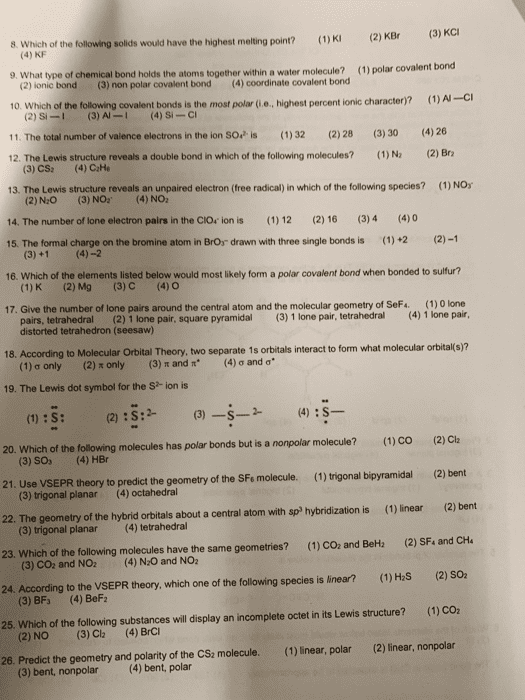CHM136H1 Lecture Notes - Lecture 2: Lone Pair, Bond Length, Molecular Geometry

34
CHM136H1 Full Course Notes
Verified Note
34 documents
Document Summary
Chm138h1 - lecture 2 - introduction to organic chemistry (continued) 1858: kekul and couper independently observed that c always has four bonds, which they called affinity units . 1874: van"t hoff and le bel proposed that the four c bonds have specific spatial directions. Atoms surround carbon as corners of a tetrahedron. 1916: lewis proposed that organic compounds have covalent bonds from sharing electrons. Lewis structures (electron dot) show valence electrons of an atom as dots. H has one dot, representing its 1s electron. Kekul structures (line-bond) have a line drawn between two atoms indicating a two- electron covalent bond. A stable molecule results at completed shell: octet (eight dots) for main-group electrons (two for h) the octet rule. Valence electrons not used in bonding are called non-bonding electrons (or lone pair electrons) E. g. nitrogen atom in ammonia shares six valence electrons in three covalent bonds, and the remaining two valence electrons are a non-bonding lone pair.


